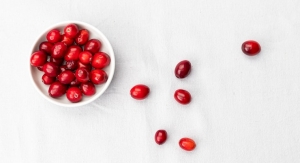10.17.16
Researchers have known for more than 50 years that eating oats can lower cholesterol levels and thus reduce a person's risk of developing cardiovascular disease. Studies during that time have focused on the impact of oats on levels of LDL (or "lousy") cholesterol, which collects in the walls of blood vessels where it can cause blockages or blood clots.
But there is growing evidence that two other markers provide an even more accurate assessment of cardiovascular risk—non-HDL cholesterol (total cholesterol minus the "H" or "healthy cholesterol") and apolipoprotein B, or apoB, a lipoprotein that carries bad cholesterol through the blood. This is especially true for people with metabolic syndrome and Type 2 diabetes, since they typically do not have elevated LDL cholesterol levels.
A new systematic review and meta-analysis of randomized controlled trials has concluded that eating oat fiber can reduce all three markers. The study, led by Dr. Vladimir Vuksan, a research scientist and associate director of the Risk Factor Modification Centre of St. Michael's Hospital, was published online in the British Journal of Nutrition.
Dr. Vuksan said oats are a rich source of beta-glucan, a viscous soluble fiber, which seems to be responsible for the beneficial effects. The first study of its kind, published in 1963, found that substituting white bread with oat bread containing 140g of rolled oats lowered LDL cholesterol.
Dr. Vuksan's group looked at 58 clinical trials involving almost 4,000 people from around the world that assessed the effect of diets enriched with oat beta-glucan compared with controlled diets on LDL cholesterol, and, for the first time, on non-HDL cholesterol and apoB as well.
"Diets enriched with about 3.5 grams a day of beta-glucan fiber from oats were found to modestly improve LDL cholesterol, but also non-HDC and apoB compared to control diets," Dr. Vuksan said.
The review found that overall, LDL cholesterol was reduced by 4.2%, non-HDL cholesterol by 4.8% and apoB by 2.3%.
Dr. Vuksan said it could be difficult for people to consume the recommended amount of oat fiber by eating oat meal alone so he recommends people increase their consumption of oat bran. For example, one cup of cooked oat bran (88 calories) contains the same quantity of beta-glucan as double the amount of cooked oat meal (166 calories). Oat bran can also be eaten as a cereal, used in some baked goods (although since it is low in gluten, the texture may be tough) or sprinkled on other foods.
Canada is the third largest producer of oats in the world, so increasing consumption is good for health and the economy as well, Dr. Vuksan said. Consumption of oats has been declining considerably for many years.
But there is growing evidence that two other markers provide an even more accurate assessment of cardiovascular risk—non-HDL cholesterol (total cholesterol minus the "H" or "healthy cholesterol") and apolipoprotein B, or apoB, a lipoprotein that carries bad cholesterol through the blood. This is especially true for people with metabolic syndrome and Type 2 diabetes, since they typically do not have elevated LDL cholesterol levels.
A new systematic review and meta-analysis of randomized controlled trials has concluded that eating oat fiber can reduce all three markers. The study, led by Dr. Vladimir Vuksan, a research scientist and associate director of the Risk Factor Modification Centre of St. Michael's Hospital, was published online in the British Journal of Nutrition.
Dr. Vuksan said oats are a rich source of beta-glucan, a viscous soluble fiber, which seems to be responsible for the beneficial effects. The first study of its kind, published in 1963, found that substituting white bread with oat bread containing 140g of rolled oats lowered LDL cholesterol.
Dr. Vuksan's group looked at 58 clinical trials involving almost 4,000 people from around the world that assessed the effect of diets enriched with oat beta-glucan compared with controlled diets on LDL cholesterol, and, for the first time, on non-HDL cholesterol and apoB as well.
"Diets enriched with about 3.5 grams a day of beta-glucan fiber from oats were found to modestly improve LDL cholesterol, but also non-HDC and apoB compared to control diets," Dr. Vuksan said.
The review found that overall, LDL cholesterol was reduced by 4.2%, non-HDL cholesterol by 4.8% and apoB by 2.3%.
Dr. Vuksan said it could be difficult for people to consume the recommended amount of oat fiber by eating oat meal alone so he recommends people increase their consumption of oat bran. For example, one cup of cooked oat bran (88 calories) contains the same quantity of beta-glucan as double the amount of cooked oat meal (166 calories). Oat bran can also be eaten as a cereal, used in some baked goods (although since it is low in gluten, the texture may be tough) or sprinkled on other foods.
Canada is the third largest producer of oats in the world, so increasing consumption is good for health and the economy as well, Dr. Vuksan said. Consumption of oats has been declining considerably for many years.



























